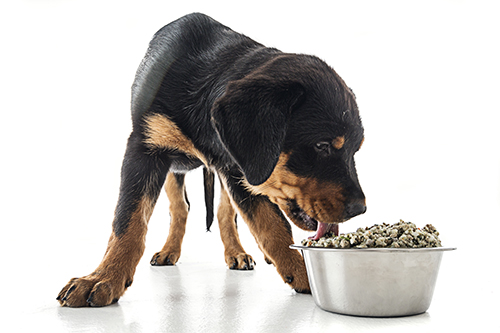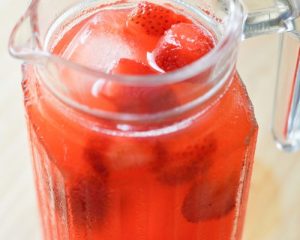
While most brands are labeled healthy, experts disagree.
You want your pet to have a long, healthy life, and you do your best to accomplish this.
So maybe you have a checklist:
- Daily walks? Check.
- Regular grooming and dental cleanings? Check.
- Annual physicals? Check.
- Quality pet food? Check?
As with humans, good nutrition is a big part of health. And while many pet food brands say they are healthy, some pet owners and industry experts disagree.
“Pets were never meant to eat little brown pellets,” said Shawn Buckley, founder of Orange County-based JustFoodForDogs, which makes food fit for humans fresh daily for dogs and cats in nine open kitchens supplying food to its 181 locations. “They should eat real food, USDA/FDA-certified ingredients, just like us, but their meals should be nutritionally balanced for them — cat and dog. … You cannot put ‘meat in a bag’ for a year at room temperature. That’s what kibble is and it defies common sense.”
Rancho Santa Margarita-based Grandma Lucy’s (grandmalucys.com), has been making freeze-dried dog and cat food and treats as an alternative to kibble for 20 years now.
“We have always recommended that pet owners really take a look at their pet food’s ingredient list,” said Breann Shook, Grandma Lucy’s co-owner and founder. “Make sure you recognize — and can pronounce — all of the ingredients listed. … Our motto has always been, if we would not eat it ourselves, we would never put it in our pet’s food.”
Buckley said whenever possible, pet owners should avoid purchasing food and instead make it themselves. JustFoodForDogs offers recipes on its website (justfoodfordogs.com) for pet owners to make at home.
But there are other things pet owners can do to improve their pets’ diets.
Veterinarian Dr. Oscar Chavez, JustFoodForDogs’ chief medical officer, offers these tips:
- Kibble is never a good idea. Serving highly processed dried kibble is no way to treat a member of your family. You wouldn’t think of feeding your children a diet consisting of dry, highly processed pellets full of preservatives day in and day out — so why feed that to your dog? Even premium brand kibble products contain a staggering amount of indigestible ingredients, preservatives and chemicals. The most nutritious food to feed your dog, based on veterinary science, is whole food just like we eat.
- Be sure all ingredients are USDA/FDA-certified for human consumption. How can you be sure that the food you feed your dog is made from the highest quality ingredients? Don’t accept terms such as “human grade” or “human quality.” Those are marketing labels and have no legal meaning. Instead, be sure the food you select is made from the highest quality meats and fresh produce and has been certified, inspected and approved by the USDA/FDA for human consumption.
- No preservatives or fillers… ever. Dog food labels can be very misleading. For example, peanut shells can show up on labels as vegetable fiber but they add little nutritional value. In truth, that is a pretty mild example — other feed ingredients and preservatives can be downright harmful. So always look for dog food that is 100 percent free from fillers and preservatives.
- Minimal cooking means maximum nutrition. Lightly cooking fresh, whole-food ingredients is a superior way to maximize nutrition, digestibility and taste. Studies have shown that dogs digest gently cooked whole food better than kibble. The minimal cooking process is also superior to feeding a raw diet because gentle cooking protects the healthy nutrients while eliminating potential contamination hazards that can exist from feeding raw food.
- Make sure your dog’s diet is proven in feeding trials. A veterinary team with complementary backgrounds in fields like nutrition, formulation, toxicology and dermatology should be involved in the creation of your dog’s diet. In addition, the food should be tested in independent feeding trials to ensure that it is healthy and nutritionally balanced for long-term feeding.
- Insist on transparency. Unfortunately, the commercial pet food industry is largely unregulated. It’s virtually impossible to deduce from dog food labels exactly what is in the food you feed your beloved pet. Instead of buying dog food made in an unknown factory or plant, seek out food freshly prepared in kitchens that are open to the public. Under the watchful eyes of pet parents, such kitchens naturally adhere to a much higher operating standard absent from most private commercial plants.
- Get exactly the right recipe for your dog. Every dog’s nutritional needs are different and daily meals should be tailored based on life stage, weight, appetite, activity level and health. Puppies have different recipe requirements than adult dogs; small breeds are different from large breeds; active dogs need more calories than sedentary ones. Look for companies that provide personalized feeding plans that take into account your dog’s individual nutritional requirements.
By Jessica Peralta









Leave a Reply